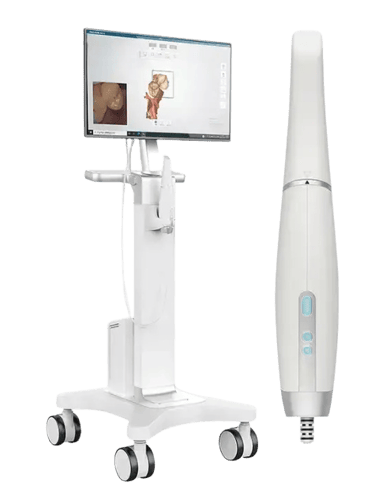Why Every Modern Dental Practice Needs a 3D Intraoral Digital Scanner
9/9/20242 min read
Introduction to 3D Intraoral Digital Scanners
In the rapidly evolving field of dentistry, adopting the latest technology is crucial for providing top-notch patient care. One such innovation making waves is the 3D intraoral digital scanner. These state-of-the-art devices are changing the landscape of dental practices, offering numerous benefits to both dentists and patients alike.
Enhanced Accuracy and Precision
The primary advantage of 3D intraoral digital scanners is their unparalleled accuracy. Traditional dental impressions can be uncomfortable and prone to errors. In contrast, digital scanners create highly precise 3D images of a patient's oral cavity. This high level of detail ensures that dental restorations, such as crowns and bridges, fit perfectly with minimal adjustments needed.
Accuracy in diagnostics is another significant benefit. Detailed scans allow for better detection of oral health issues, enabling more effective treatment plans. As a result, patients receive higher quality care, and the chances of follow-up appointments due to ill-fitting restorations are significantly reduced.
Improved Patient Experience
Comfort is a key factor in patient satisfaction. Traditional impression materials can be messy and uncomfortable for patients. In contrast, 3D intraoral scanners are non-invasive and much more comfortable, making the process quick and hassle-free. This improved experience can lead to increased patient retention and positive word-of-mouth referrals.
Additionally, the digital nature of these scans means that results can be shared instantly with patients. Visual aids can greatly improve the communication between dentist and patient, helping individuals understand their treatment options better.
Time and Cost Efficiency
Another key benefit of 3D intraoral digital scanners is the significant time savings they offer. The process of taking digital impressions is much faster than traditional methods. This time efficiency can lead to shorter appointment times, allowing dental practices to see more patients in a day.
Cost efficiency is also a major factor. While the initial investment in a 3D intraoral scanner can be substantial, the long-term savings make it a worthwhile investment. Reduced material costs for traditional impressions, decreased need for remakes, and fewer patient visits for adjustments all contribute to a cost-effective practice.
Conclusion
Incorporating a 3D intraoral digital scanner into a dental practice is no longer just an option—it’s becoming a necessity. The benefits of enhanced accuracy, improved patient experience, and increased efficiency underscore their essential role in modern dentistry. By staying ahead of the curve with the latest technology, dental practices can ensure that they provide the highest standard of care, leading to better patient outcomes and a more successful practice.
© 2024. All rights reserved.


